Asia's Toughest Jobs: Quezon City’s ‘loving, caring’ jail officer
Working inside one of Asia’s most crowded prisons is an unenviable task. But for David Jambalos, one of the oldest officers on duty at Quezon City jail, the job is all about helping others, as Jack Board found out in Channel NewsAsia’s look at some of the region’s toughest jobs.
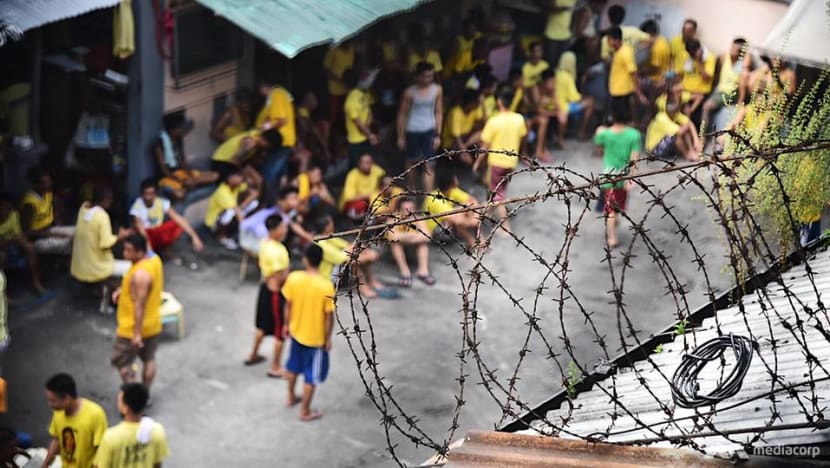
Quezon City Jail has been hideously overcrowded since President Duterte's "war on drugs" rolled out in 2016. (Photo: Jack Board)
MANILA: David Jambalos has been in jail for most of his adult life.
He has made a choice, however. For the 42-year-old, spending his waking hours among thousands of prisoners was a decision he made many years ago.
He walks in and out of the gates of Quezon City jail in metro Manila every day as one of its most senior officers, with a higher calling in mind.
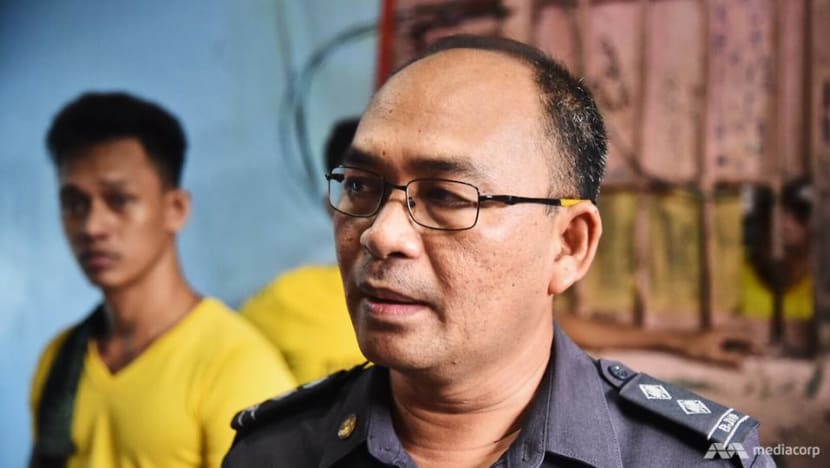
“I am destined to be here. God has a purpose for me,” he says mid-shift in the teeming prison, thousands of yellow-clad inmates filling his view through metal bars.
It is hideously overcrowded inside. There are about 2,700 inmates here but the official capacity is only 800.
Men linger in every last crevice of the ageing facility. Their sweaty bodies press against smeared steel and lie prone on any surface available. The prisoners take shifts to sleep, but the heat is overwhelming and the noise of the masses makes rest a trying experience.
On the walls are messages like “Be Humble”, “Our Dignity” and “No Fear”. All of those aspirations seem unlikely while detained here, but Captain Jambalos believes that despite the conditions, suffering need not be inevitable.
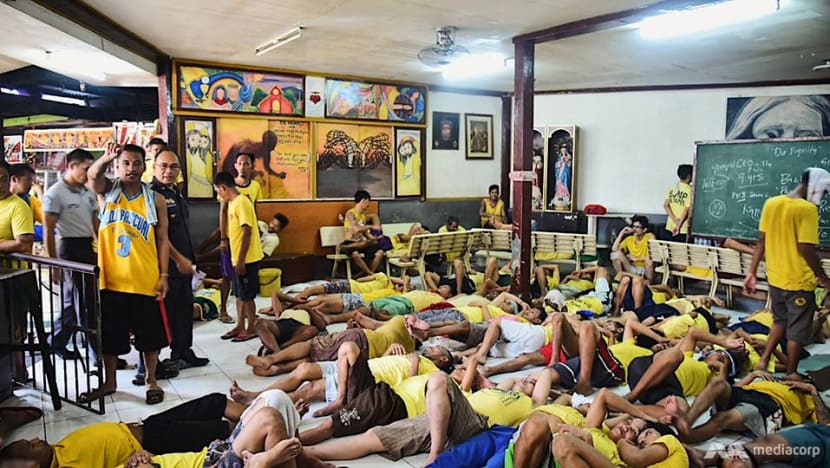
Jambalos has served in many roles during his two decades in the system; he first stepped into this jail back in April 1994. For now, he is in charge of logistics, gate security and intelligence. Recently he was the chief custodian, in charge of monitoring the waves of inmates.
Walking through the facility requires a parting of a human wave. Sweat drips from Jambalos’ brow almost immediately as he tours the dimly lit inner sanctum, shadowed by another staff member for security. After decades of experience there is no fear in his steps anymore.
He frequently stops to speak to the men who appear quick to ask questions and point out problems they are having. “If I’m doing my job properly, no one is hurting one another and I’m just giving advice,” he says.
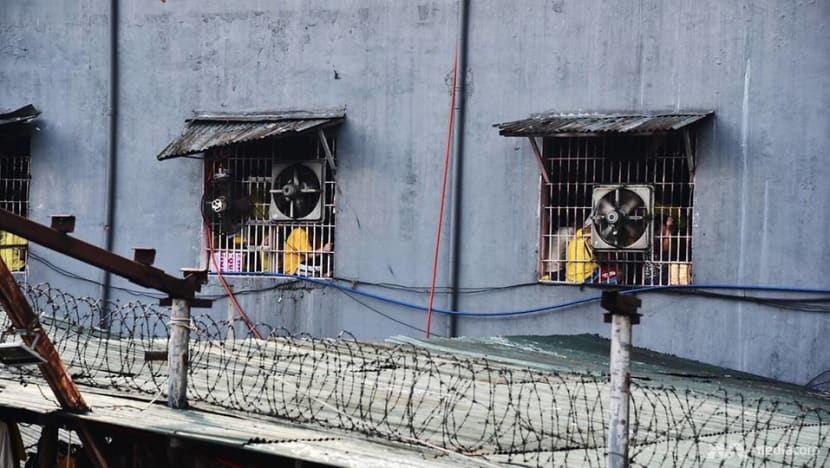
Philippine jails are the most overcrowded in Asia and possibly the entire world. An audit at the end of 2016 found that the jail population had reached 511 per cent of capacity; in contrast, the world’s worst overcrowding in 2013 had been Haiti at 335.7 per cent.
Ask Jambalos why there are so many inmates and the answer is just one word: “Drugs”.
The explosion in arrests and imprisonments is a direct result of President Rodrigo Duterte’s “war on drugs”. He made an election pledge to rid communities around the country of drug abuse and the lawlessness and violence that comes with it.
The result has been thousands of deaths and jail populations reaching desperate levels.
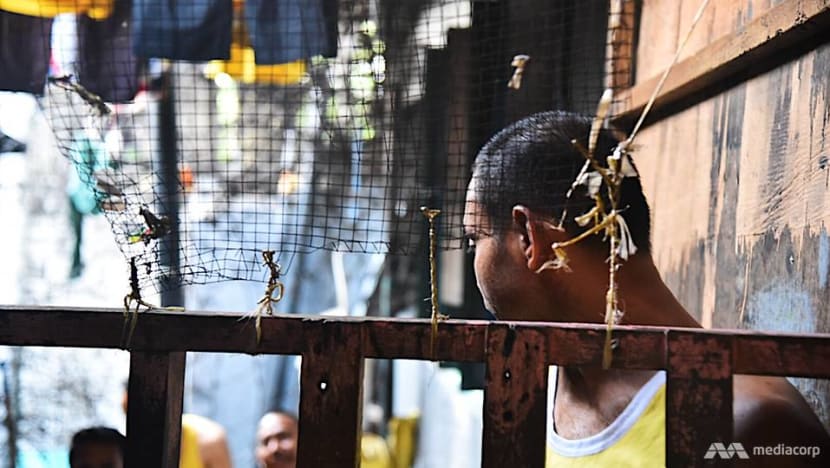
Officially, police say more than 3,000 suspects have been killed in anti-drug operations over the past 12 months, while about 9,000 other deaths have been registered in the past year – some of them drug related, others without known motives.
Critics have argued that many of the killings have been targeted executions committed by undercover police or lawless vigilante groups, at the urging of the president.
Meantime, the Bureau of Jail Management and Penology says it had 126,946 registered inmates at the end of last year, a dramatic 30,544 increase from the previous year.
“The situation in the Philippines’ jails is an unmitigated disaster that just keeps getting worse,” said Phil Robertson, the deputy Asia director for Human Rights Watch.
“Since the ‘war on drugs’ started, the already dire conditions of jail facilities across the Philippines have gotten much worse and became a full-blown crisis. What's immediately obvious is prisoners are packed into these spaces like sardines in a can.”
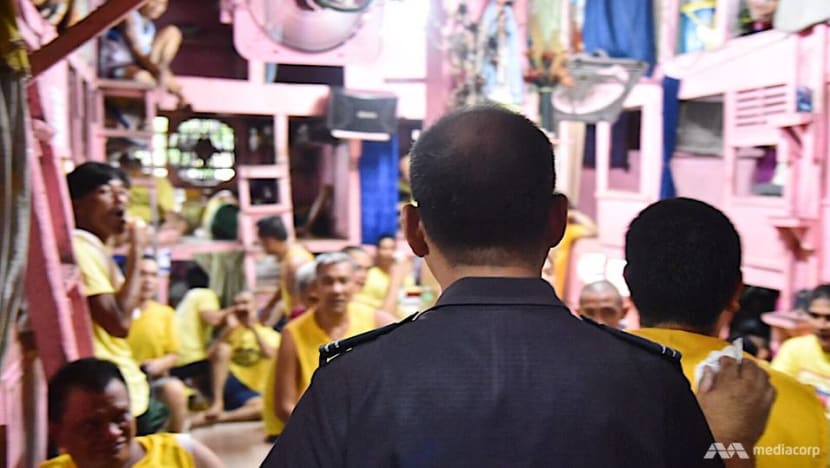
In Quezon, at the peak of Duterte’s drug blitz, there were more than 4,000 inmates being held, causing major logistical challenges for those running the jail, as well as unsafe conditions for the prisoners themselves.
Over the preceding months, the jail’s warden managed to decrease the burden by moving inmates to different facilities, a challenging prospect when arrests were being made at a rapid rate throughout the Philippines.
Those were dangerous times for many in poorer, drug-affected communities. And the fear of being shot still lingers for inmates, Jambalos said.
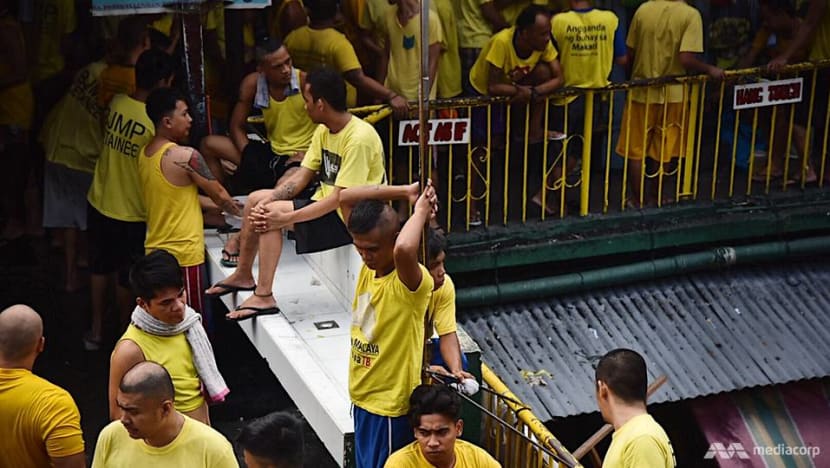
It means many inmates prefer to be behind bars than back on the streets. The lure of using drugs – typically methamphetamine, known locally as shabu – is strong for some, and society perceptions can also be hard to shake, he explained.
"Maybe the family has regret, because the status of the inmate is ‘you’re from the jail’. And the parents maybe don’t understand about it,” he said.
“Sometimes I heard some stories like ‘we’re lucky to be in here inside the jail because outside, you know what happened’. It’s a safe place for them.
“We say to them, you’re lucky that you’re in here.”
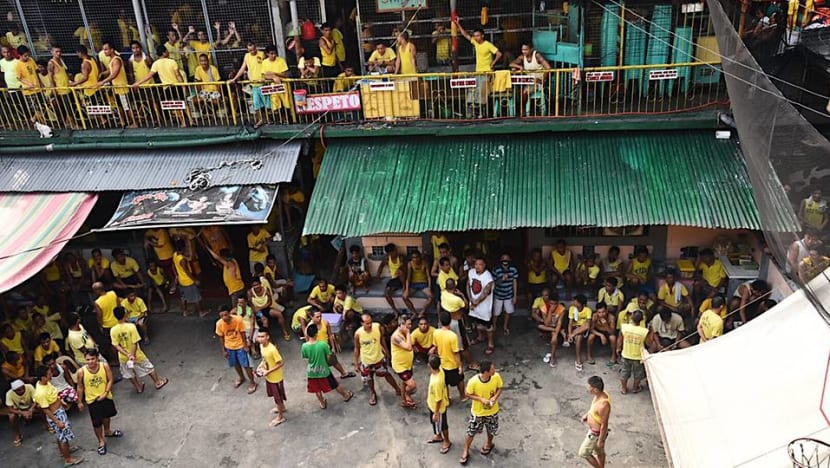
KNIVES, BOWS AND ARROWS
Nonetheless, the threat of violence is never far away, and the jail is considered to be a dangerous place for both inmates and staff. Gang activity is rife and Jambalos and his colleagues need to be constantly on their guard against the risk of rioting.
There were times when violent riots were a weekly proposition, with inmates easily able to fashion primitive weapons to attack one another, Jambalos said.
“They had knives, they had bows and arrows with nails and rubber that they stretched to shoot at one another,” he said of a period between the early 90s and 2002.
“We were very undermanned. The jail officer to inmate ratio was 10 to 1,000. It was very difficult to handle. At these times, there were fatalities.
“When I first experienced a riot in the jail, it was mixed emotions. I had a fear, I had a feeling, that maybe it was the last time I would see the world.”
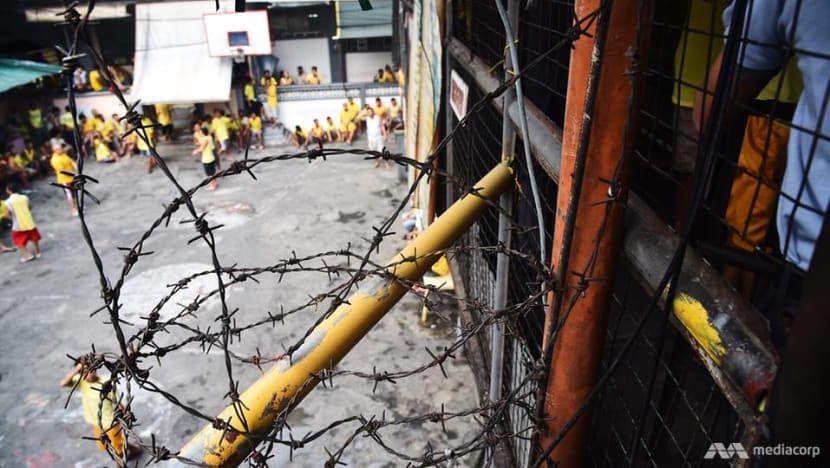
Now, better management, self-improvement programs and blocking contraband channels has ensured Quezon City jail is as secure as it can be, he said.
Jambalos’ workplace for more than two decades remains far from ordinary or comfortable. He said his family, including his two children, worry about him every day when he goes to work.
“They understand it but every time I’m going to the jail they’re saying ‘daddy take care, your job is a difficult job, I love you’,” he said. “Because my intention for them is to be happy, I take care of myself.”
But far from his own daily challenges, he said he empathises more with the men who cannot leave this place and sees his job inside as more than just a duty to the community.
“If you apply your knowledge, your skill in a humane way, it is much for more than a service to the community,” he said. “It is for humanity.”












